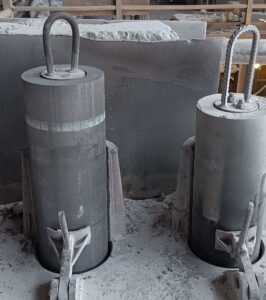Ever wondered about the secret to maximizing the lifespan of graphite electrodes? We’ve got you covered! In this guide, we’ll unravel the best practices in transporting, storing, and using graphite electrodes. From forklifting finesse to how to perfect connections, let’s dive into the world of graphite electrodes and ensure you’re equipped with the knowledge to keep operations smooth and efficient. Ready for a deep dive? Let’s get started!
- Graphite electrodes should be covered with rain-proof tarpaulin in transportation.
- When forklifting, additional wire rope must be used, and steel wrapping tape cannot be employed directly to fetch electrode.
- Electrode should be stored in clean and dry place. Rain-proof tarpaulin should be otherwise applied, and the number of piling layers ought not to exceed four.
- Electrodes should be desiccated properly with proximity to electric furnace before using. The temperature should not exceed 120 °C and duration not less than 48 hours.
- Please clean the electrode threads first before connection, then screw the nipple into one end of the electrode. Don’t touch the thread, and don’t put the joint directly into the working electrode on furnace.
- Before connecting, clean the screw thread of electrode with compressed air free of oil and water.
- When connecting, the electrode is aligned with the center axis of the nipple connected.
- Use special caliper to tight electrode according to rated torque by mechanical way, hydraulic pressure or wind pressure equipment should also be available.
- The two ends of electrode should be in good contact, not too loose or tight.
- Electrode clamp holder must be placed between the two white guard lines. Clamp holder and interfaces of the electrode must be cleaned regularly.
- To avoid the electrode breakage, insulating materials should not be put into the furnace. The working current of electrode must be conformity with the grade. Also put the large materials in lower part of the furnace and small materials the upper part.
As we conclude, mastering the art of handling graphite electrodes is crucial for ensuring their longevity and performance. By adhering to these best practices, to enhance the efficiency of your operations.






